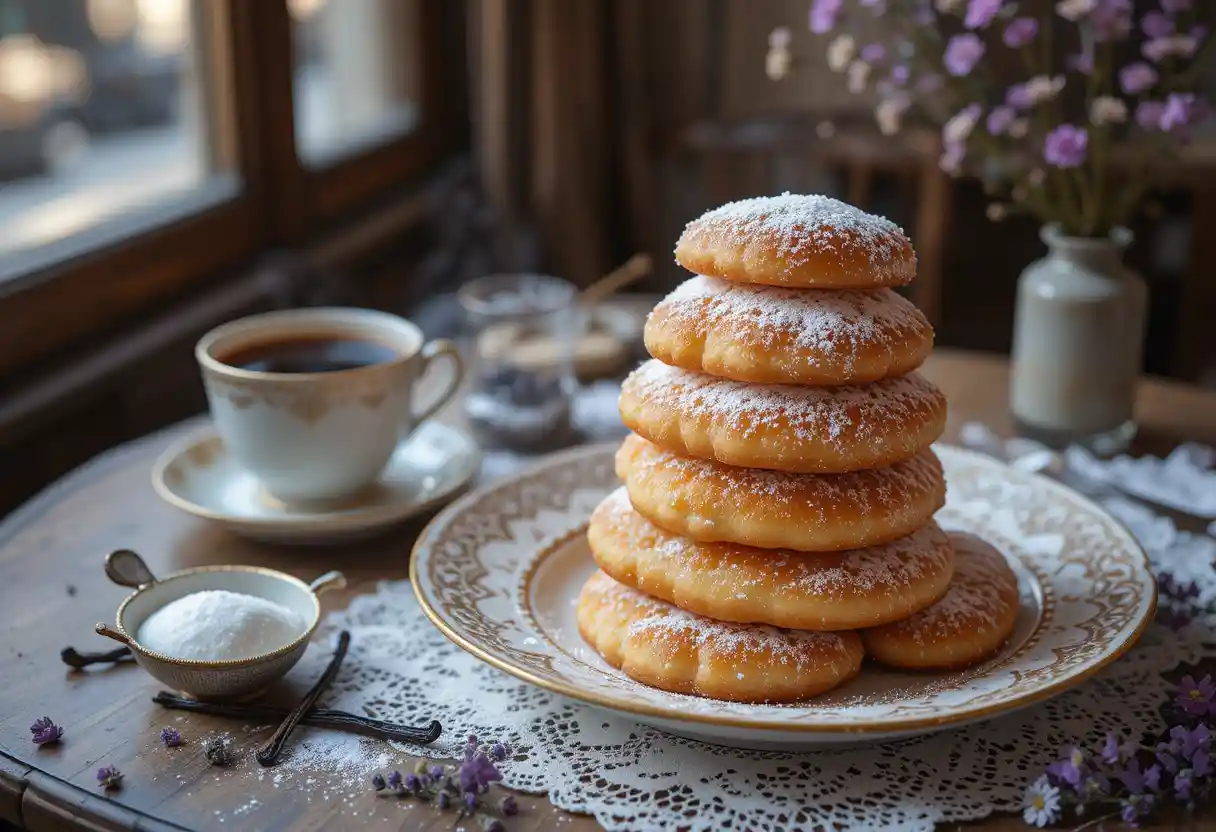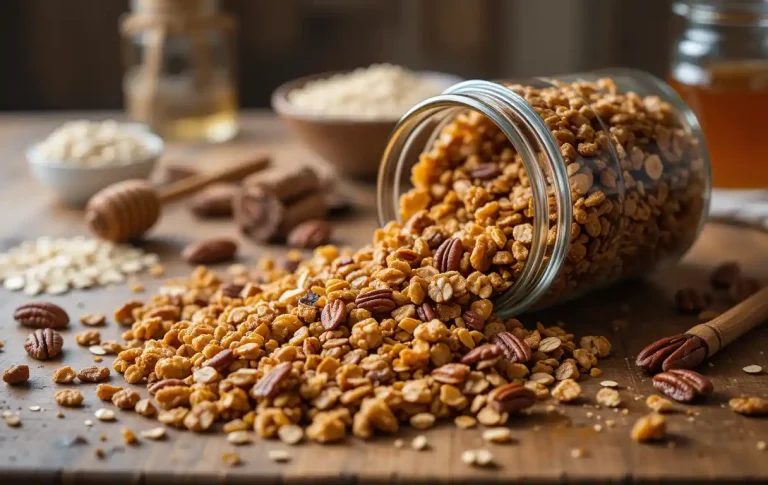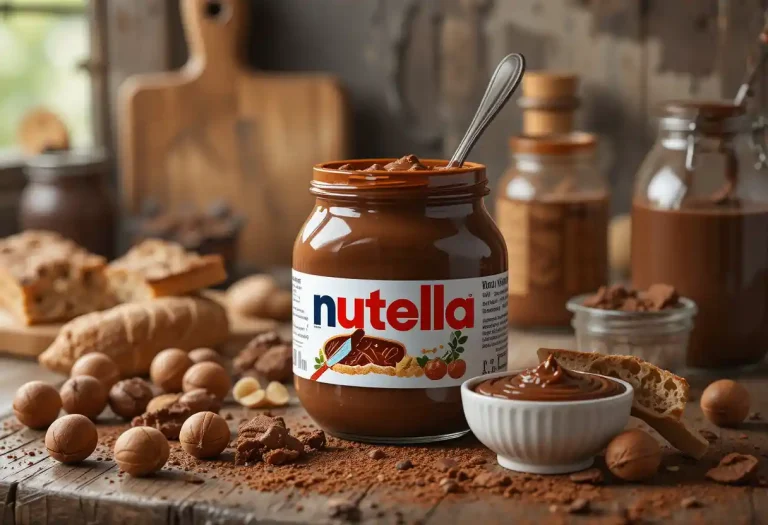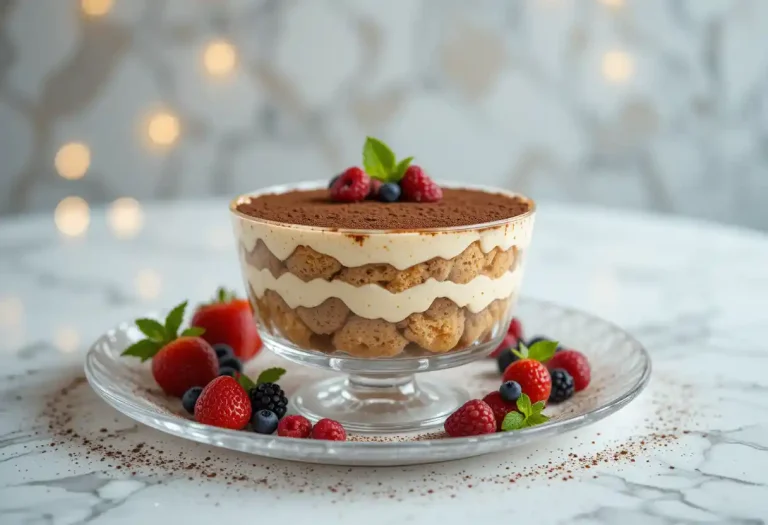Vanilla French Beignets – A Classic Parisian Treat with a Sweet Twist
French cuisine is renowned for its exquisite flavors, elegant presentation, and timeless recipes — and few pastries embody this more joyfully than the beignet. Light, airy, and dusted with powdered sugar, Vanilla French Beignets are the epitome of indulgent comfort. Whether enjoyed with your morning coffee or served as a charming dessert, these delicate fried pillows capture the magic of Paris in every bite.
In this blog post, we’ll explore the beauty of vanilla-infused beignets, how they differ from other pastries, how to prepare them from scratch, and tips for achieving the perfect texture. We’ll also delve into their cultural roots and offer some delicious serving suggestions to elevate your beignet experience.
What Are Beignets?
The word “beignet” (pronounced ben-yay) comes from the French word for “fritter,” and it refers to a deep-fried pastry that’s traditionally made from a simple yeast dough. Unlike donuts, beignets have no hole in the center and are generally lighter and puffier. Once fried, they are generously dusted with powdered sugar and often served warm.
Though beignets are closely associated with New Orleans due to the city’s French heritage, the original beignets hail from France, where they have been cherished for centuries, especially during Mardi Gras festivities. Adding vanilla to the dough gives the classic recipe a touch of sophistication and a deeper flavor profile.
Why Vanilla Beignets?
Vanilla is one of the most beloved and versatile flavors in the culinary world. It adds warmth, fragrance, and depth to baked goods and pastries. When infused into the dough of French beignets, it creates a subtle but luxurious aroma and taste that perfectly complements the sweetness of the powdered sugar.
The result? A melt-in-your-mouth pastry that’s light, crispy on the outside, fluffy on the inside, and scented with delicate vanilla notes. It’s the kind of pastry that makes you close your eyes and smile after every bite.

Ingredients You’ll Need
To make authentic Vanilla French Beignets at home, you only need a few pantry staples. The ingredients are simple, but each plays an important role in achieving the perfect texture and flavor:
- All-purpose flour – The foundation of your dough. Choose a high-quality flour for the best results.
- Active dry yeast – Provides the essential rise and airy texture.
- Granulated sugar – Adds just a hint of sweetness to the dough.
- Salt – Balances out the sweetness and enhances the flavor.
- Warm milk – Helps activate the yeast and enrich the dough.
- Unsalted butter – Adds richness and moisture.
- Eggs – Give structure and tenderness.
- Pure vanilla extract – The star ingredient that gives these beignets their signature vanilla essence.
- Vegetable oil – For deep frying. Choose a neutral oil with a high smoke point.
- Powdered sugar – The finishing touch that gives beignets their iconic snowy topping.
Step-by-Step Instructions
1. Activate the Yeast
In a small bowl, mix the warm milk with a spoonful of sugar and the yeast. Let it sit for about 5–10 minutes until it becomes foamy. This step ensures your yeast is active and will give the dough its signature rise.
2. Mix the Dough
In a large mixing bowl, combine flour, remaining sugar, salt, eggs, melted butter, vanilla extract, and the activated yeast mixture. Use a stand mixer with a dough hook or mix by hand until the dough comes together.
3. Knead and Rise
Knead the dough for about 8–10 minutes until it becomes soft and elastic. Then, place it in a greased bowl, cover with a clean towel, and let it rise in a warm place for about 1–2 hours or until doubled in size.
4. Roll and Cut
Once the dough has risen, punch it down gently and roll it out on a floured surface to about ½ inch thickness. Cut the dough into squares or rectangles, around 2–3 inches wide.
5. Second Rise
Place the cut dough on a parchment-lined tray, cover lightly, and let them rise again for about 30–45 minutes. This second proofing helps them puff beautifully when fried.
6. Fry the Beignets
Heat the vegetable oil in a deep pot or fryer to 350°F (175°C). Gently lower 2–3 beignets into the oil at a time, frying each side for 1–2 minutes or until golden brown. Use a slotted spoon to remove them and transfer to a paper towel-lined tray.
7. Dust and Serve
While still warm, generously dust the beignets with powdered sugar. Serve immediately and enjoy the warm, vanilla-scented goodness.
Tips for Perfect Beignets
- Don’t skip the rise: Proper proofing is essential for that signature light and airy interior.
- Use pure vanilla extract: Avoid artificial vanilla for the best, most fragrant results.
- Fry in small batches: Overcrowding the oil will drop its temperature and result in greasy beignets.
- Serve immediately: Beignets are best enjoyed fresh and warm, just minutes after frying.
Creative Variations
Want to add your own spin to classic vanilla beignets? Here are a few creative variations:
- Filled Beignets: Inject the center with vanilla pastry cream or fruit preserves for a delightful surprise.
- Spiced Sugar Topping: Mix powdered sugar with a hint of cinnamon or cardamom for a warm spice twist.
- Glazed Beignets: Instead of powdered sugar, dip them in a thin vanilla glaze and let it set for a glossy finish.
- Lemon-Vanilla Beignets: Add lemon zest to the dough for a bright, citrusy note.
Beignets Around the World
While French beignets are iconic, many cultures have their own version of fried dough delights. For example:
- New Orleans Beignets: Often square, thick, and piled high with powdered sugar, these are served with café au lait.
- Italian Zeppole: A slightly denser version, often flavored with ricotta or filled with cream.
- Spanish Churros: Long and ridged, rolled in cinnamon sugar and served with chocolate.
- Pakistani Jalebi: Thin, coiled fried dough soaked in syrup for a crunchy and syrupy experience.
French vanilla beignets, however, are unique in their simplicity and elegance — making them a timeless treat suitable for any occasion.
Serving Suggestions
- Coffee or Espresso: A warm beignet paired with a strong coffee makes for the perfect Parisian breakfast.
- Afternoon Tea: Serve alongside a pot of Earl Grey or Chamomile for a light, elegant snack.
- Dessert Platter: Pair beignets with fruit, whipped cream, or chocolate sauce for a dinner party finale.
- Holiday Treats: Serve them during Easter brunch, Christmas breakfast, or any festive gathering.
Storing and Reheating
Beignets are best served fresh, but if you have leftovers:
- Storage: Keep them in an airtight container at room temperature for up to 1 day.
- Reheating: Pop them in a 300°F oven for 5–7 minutes to restore crispness. Avoid microwaving, as this makes them soggy.
- Freezing: You can freeze the raw dough squares and fry them straight from the freezer — just add a few extra seconds of frying time.
Final Thoughts
Vanilla French Beignets are a beautiful example of how simple ingredients and classic techniques can create something truly magical. Whether you’re hosting a brunch, exploring French baking, or simply indulging in a sweet treat, these golden pillows of flavor will never disappoint. Infused with rich vanilla and dusted with delicate sweetness, they’re not just a dessert — they’re a little taste of Paris in your own kitchen.
So go ahead, dust off that apron, warm up the oil, and let the aroma of vanilla and sugar fill your home. Once you take your first bite, you’ll understand why this timeless treat continues to captivate hearts (and taste buds) around the world.






